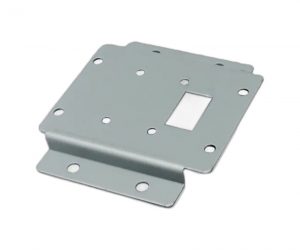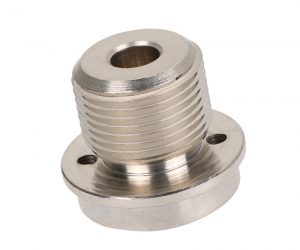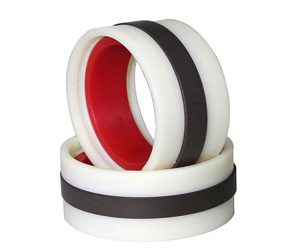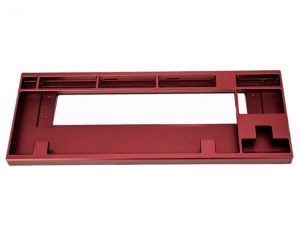The seemingly straightforward process of plunger injection molding belies a complex interplay of material science, engineering precision, and process control, all critically dependent on the idiosyncrasies of thermosetting polymers. Unlike the relatively forgiving nature of thermoplastic injection molding, the irreversible chemical transformation inherent in thermoset curing demands a nuanced understanding and meticulous execution. This isn't a beginner's guide; it's a necessary primer for those already possessing a foundational knowledge of injection molding principles.
The Thermoset Predicament: Thermosets, unlike their thermoplastic counterparts, undergo an irreversible cross-linking reaction upon curing, transitioning from a fluid state to an infusible, rigid solid. This fundamental difference dictates every aspect of the plunger injection molding process. The precise control of this exothermic reaction, often a delicate dance between temperature, pressure, and time, is paramount to achieving the desired mechanical properties and minimizing defects. Variations in cure kinetics, stemming from subtle changes in material composition or processing parameters, can lead to catastrophic failures, rendering the entire batch unusable.
The Plunger's Reign: The plunger itself, a piston-like mechanism, is the heart of the system. Its controlled movement within the heated barrel dictates the material's compression, melting, and injection. The design of the plunger, including its material, surface finish, and tolerances, directly impacts the consistency of the melt and the pressure profile during injection. Deviations from optimal plunger performance can result in inconsistent fill, short shots, or even catastrophic plunger failure, necessitating costly downtime and repairs.
Material Alchemy: The preparation of the thermoset resin is far from trivial. Precise weighing and mixing of the resin, curing agents, fillers, and other additives are crucial. Even minor variations in these proportions can significantly alter the rheological properties of the melt and the final cured part's characteristics. Furthermore, the material's inherent viscosity, its sensitivity to shear forces during melting, and its potential for degradation under high temperatures all demand careful consideration.
The Injection Enigma: The injection phase is a high-stakes gamble. The plunger's velocity, pressure profile, and dwell time within the mold cavity all interact to determine the final part's density, structural integrity, and dimensional accuracy. Insufficient pressure can lead to voids and incomplete filling, while excessive pressure can cause flash or even mold damage. The precise control of these parameters, often requiring sophisticated feedback mechanisms and real-time monitoring, is essential for consistent results.
Curing's Crucible: The curing process, a complex chemical reaction, is not simply a matter of waiting. It involves precise temperature control, often requiring sophisticated thermal management systems within the mold itself. Non-uniform curing can result in internal stresses, warping, and reduced mechanical strength. Understanding the cure kinetics of the specific resin system is paramount for optimizing the curing cycle.
Beyond the Basics: Mold design, part design optimization, and quality control are not mere afterthoughts; they are integral components of successful plunger injection molding. The mold's design must account for the high pressures involved, the exothermic nature of the curing reaction, and the potential for material shrinkage. Part design must consider the flow characteristics of the viscous melt, minimizing areas prone to air entrapment and ensuring uniform wall thicknesses. Rigorous quality control, incorporating statistical process control (SPC) and destructive/non-destructive testing, is essential for maintaining consistent product quality and identifying potential process deviations.
Safety First, Always: The high pressures, temperatures, and the potential for rapid exothermic reactions necessitate stringent safety protocols. Proper training, adherence to safety regulations, and the implementation of appropriate safety equipment are non-negotiable.
Plunger injection molding remains a specialized process, demanding a deep understanding of material science, process engineering, and safety protocols. Only through rigorous attention to detail and a commitment to continuous improvement can the challenges inherent in this demanding process be overcome.
Plunger injection molding, a venerable yet often overlooked technique in polymer processing, presents a compelling paradox: simplicity juxtaposed with inherent limitations. While its low capital expenditure and operational ease initially attract manufacturers, a closer examination reveals a nuanced reality far removed from the simplistic descriptions often encountered. This article delves into the complexities of plunger injection molding, dissecting its operational mechanics, inherent vulnerabilities, and surprising applications, moving beyond the superficial to uncover its true potential and limitations.
The fundamental principle, deceptively straightforward, involves the forceful displacement of molten thermoplastic resin from a heated barrel into a precisely engineered mold cavity via a reciprocating plunger. This seemingly rudimentary process, however, is fraught with subtle yet critical variables influencing the final product's quality and consistency. The rheological properties of the polymer, the meticulously controlled temperature profile within the barrel and mold, and the plunger's velocity and pressure all intertwine in a complex dance, demanding a level of operator skill often underestimated. Failure to master these parameters results in a cascade of potential defects, ranging from incomplete filling and short shots to warping, sink marks, and unacceptable variations in dimensional accuracy.
The operational sequence, while appearing linear, is a dynamic interplay of thermal and mechanical forces. The initial heating phase, crucial for achieving the necessary viscosity for injection, is followed by the precisely timed and controlled plunger action. This action, far from being a simple push, requires careful management to avoid shear-induced degradation of the polymer, a phenomenon that can significantly compromise the final product's mechanical properties. The subsequent cooling and solidification phase, equally critical, dictates the final dimensional stability and surface finish. The ejection process, often overlooked, presents further challenges, particularly with intricate geometries prone to sticking or damage.
The purported advantages – low equipment cost and operational simplicity – are double-edged swords. While the initial investment is indeed lower compared to screw injection molding, the reduced throughput and higher labor intensity often offset these savings in high-volume production. The ease of operation, while true for simpler parts, becomes a significant liability when dealing with complex geometries or demanding material specifications. The inherent limitations in pressure control and the susceptibility to degradation restrict its application to less demanding applications.
While often relegated to low-volume production of simpler parts, plunger injection molding finds niche applications in specialized areas. Its ability to handle a wide range of thermoplastic materials, coupled with its adaptability to smaller batch sizes, makes it suitable for prototyping, short-run production, and applications requiring rapid turnaround times. However, its limitations in terms of precision and consistency necessitate careful consideration of the part design and material selection. The choice of plunger injection molding should be a strategic decision, carefully weighing its inherent limitations against its cost-effectiveness and suitability for the specific application. It is not a universal solution, but rather a specialized tool in the broader arsenal of polymer processing techniques.
What is Plunger Type Injection Moulding?
Plunger type injection moulding is a process that uses a plunger to inject molten plastic into a mould cavity, where it solidifies and takes the shape of the mould. The plunger is a metal rod that pushes the plastic through a heated cylinder into the mould. The plunger can be manually operated or driven by hydraulic or pneumatic pressure. The mould can be made of metal, wood, or other materials, and it can have one or more cavities. The mould is usually clamped or bolted to a fixed plate on one end and a movable plate on the other end. The movable plate can be opened and closed by a toggle mechanism or a hydraulic cylinder.
How Does Plunger Type Injection Moulding Work?
The process of plunger type injection moulding consists of four main steps: heating, injecting, cooling, and ejecting.
- Heating: The plastic material is fed into a hopper at the top of the cylinder. The cylinder is heated by electric heaters or steam coils to melt the plastic. The temperature of the cylinder depends on the type and grade of plastic used, but it is usually between 150°C and 300°C. The plastic becomes viscous and flows down the cylinder by gravity.
- Injecting: The plunger is pushed forward by manual or mechanical force to inject the molten plastic into the mould cavity. The amount of plastic injected depends on the size and shape of the cavity and the pressure applied by the plunger. The injection time can range from a few seconds to several minutes, depending on the complexity and thickness of the part.
- Cooling: The molten plastic cools down and solidifies in the mould cavity. The cooling time depends on the type and thickness of plastic used, but it is usually between 10 seconds and 2 minutes. The cooling can be accelerated by circulating water or air through channels in the mould.
- Ejecting: The movable plate is opened and the part is ejected from the mould by ejector pins or air jets. The part can be removed manually or automatically by a conveyor belt or a robot arm.
What are the Benefits of Plunger Type Injection Moulding?
Plunger type injection moulding has some advantages over other methods of injection moulding, such as screw type injection moulding or reciprocating screw injection moulding. Some of these advantages are:
- Simplicity: Plunger type injection moulding is a simple and straightforward process that does not require complex machinery or controls. It can be easily operated by unskilled workers with minimal training and supervision.
- Cost-effectiveness: Plunger type injection moulding is a low-cost process that does not require expensive equipment or maintenance. It can use cheap and readily available materials for both the plastic and the mould. It can also produce parts with low scrap rates and minimal waste.
- Versatility: Plunger type injection moulding can handle a wide range of plastics, including thermoplastics and thermosets, with different properties and characteristics. It can also produce parts with various shapes, sizes, and features, such as holes, ribs, threads, inserts, etc.
What are the Drawbacks of Plunger Type Injection Moulding?
Plunger type injection moulding also has some disadvantages compared to other methods of injection moulding, such as screw type injection moulding or reciprocating screw injection moulding. Some of these disadvantages are:
- Low quality: Plunger type injection moulding can produce parts with low quality and consistency, due to factors such as uneven heating, inconsistent pressure, poor mixing, air entrapment, etc. The parts can have defects such as warping, shrinkage, bubbles, flash, etc.
- Low productivity: Plunger type injection moulding can produce parts with low productivity and efficiency, due to factors such as long cycle times, manual operations, limited automation, etc. The process can also have high energy consumption and environmental impact, due to the use of high temperatures and pressures.
- Limited applications: Plunger type injection moulding can produce parts with limited applications and performance, due to factors such as low strength, low durability, low resistance, etc. The process can also have difficulties in producing parts with complex geometries, thin walls, large sizes, etc.
What are Some Applications and Examples of Plunger Type Injection Moulding?
Plunger type injection moulding is mainly used for producing simple and low-cost plastic parts that do not require high quality or performance. Some of the common applications and examples of plunger type injection moulding are:
- Toys: Plunger type injection moulding can produce plastic toys such as dolls, cars, blocks, etc. that are colorful and fun for children.
- Household items: Plunger type injection moulding can produce plastic household items such as cups, plates, bowls, spoons, etc. that are lightweight and convenient for daily use.
- Electrical components: Plunger type injection moulding can produce plastic electrical components such as plugs, sockets, switches, etc. that are insulated and safe for electrical devices.
What are Some Applications and Examples of Plunger Type Injection Moulding?
Plunger type injection moulding is a process of forming plastic parts by injecting molten plastic into a mould cavity under high pressure. The plunger type injection moulding machine consists of a heated barrel, a plunger, a nozzle, and a mould. The plunger pushes the molten plastic through the nozzle into the mould cavity, where it cools and solidifies into the desired shape. Plunger type injection moulding is suitable for producing parts with simple geometries and low to medium production volumes. Some applications and examples of plunger type injection moulding are:
- Electrical components: Plunger type injection moulding can produce various electrical components such as switches, sockets, plugs, connectors, and circuit boards. These components require high precision and accuracy, which can be achieved by using plunger type injection moulding machines with fine control over the injection pressure and speed.
- Medical devices: Plunger type injection moulding can also produce medical devices such as syringes, needles, catheters, implants, and prosthetics. These devices require high quality and hygiene standards, which can be ensured by using plunger type injection moulding machines with sterile and clean conditions.
- Toys: Plunger type injection moulding can also produce toys such as figurines, dolls, cars, puzzles, and blocks. These toys require high durability and safety standards, which can be met by using plunger type injection moulding machines with strong and non-toxic materials.




